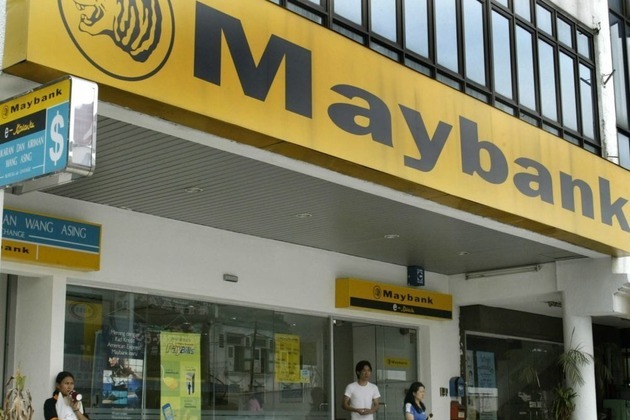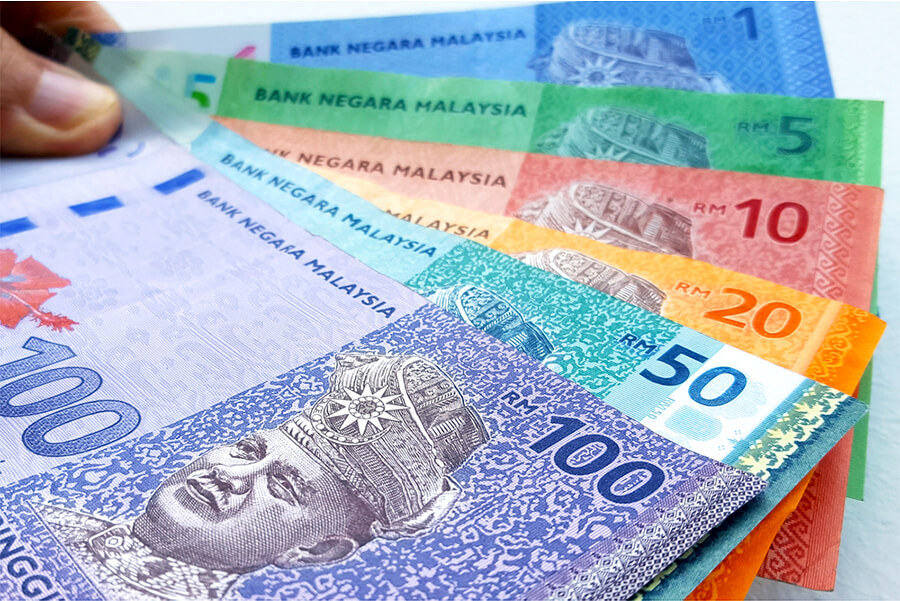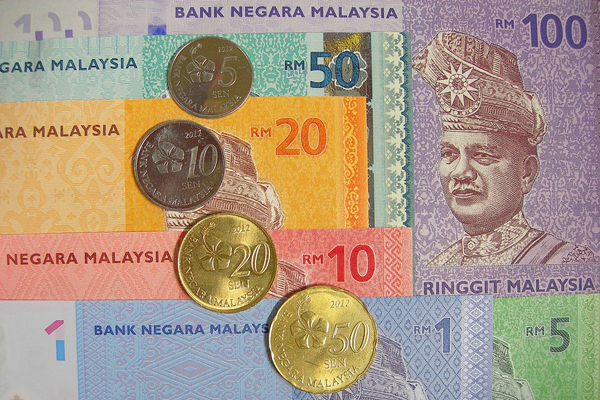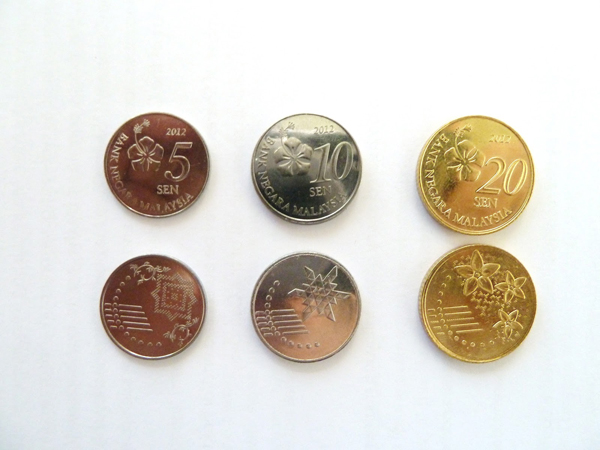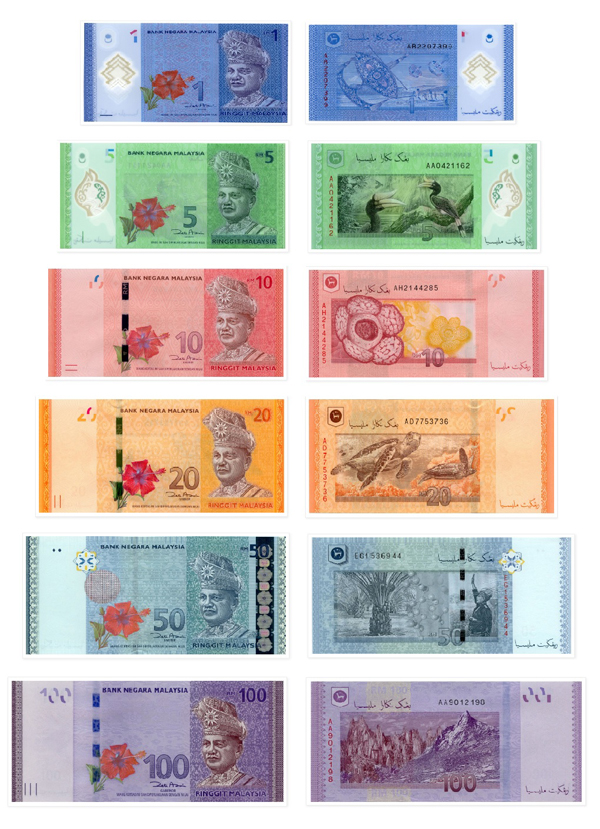No products in the cart.
Malaysia Travel Information
Malaysia Currency - Ringgit
The History of Malaysia Currency
During the period between 1946 and 1967, there were a variety of changes in Malaysia’s currency in accordance with different designs. It was not until 1975 that Malaysian ringgit issued by the Bank Negara Malaysia was recognized as Malaysia’s currency. Currently, Malaysia's monetary system contains 2 types: coin and banknote, both of whom were first introduced in 1967.
Malaysia Currency Denominations
Specifically, coins have 4 denominations: 5 sen, 10 sen, 20 sen, 50 sen, and banknotes have 5 denominations: 1 MYR, 5 MYR, 10 MYR, 50 MYR, 100 MYR; 1 MYR equals to 100 sen. Both coin and banknotes include the image of a hibiscus – national flower of Malaysia. Especially, each banknote of different denominations features a typical Malaysian symbol regarding economy, culture, tradition, nature and flora and fauna (on the back of the note).
Malaysian Coin
5 sen: 14 dots, five horizontal lines, sulur kacang (pea tendrils) motif, "destar siga" cloth motif of the Kadazan-Dusun tribes (reverse) and the bank title, value, year of minting, the national flower – hibiscus (observe)
10 sen: 14 dots, five horizontal lines, weave pattern of the Mah Meri people (reverse) and the bank title, value, year of minting, national flower – hibiscus (observe).
20 sen: 14 dots, five horizontal lines, bunga melur (Jasmine flower) motif on the foreground with a "destar siga" motif on the background (reverse) and the bank title, value, year of minting, national flower – hibiscus (observe).
50 sen: 14 dots, sulur kacang (pea tendrils) motif and fine lines denoting security feature (reverse) and the bank title, value, year of minting, national flower – hibiscus (observe).
Malaysian Banknotes
1 MYR: Tuanku Abdul Rahman with the national flower - hibiscus, and patterns of the traditional fabric - the songket (observe) and Wau bulan (reverse).
5 MYR: Tuanku Abdul Rahman with the national flower - hibiscus, and patterns of the traditional fabric - the songket (observe) and Rhinoceros hornbill (reverse).
10 MYR: Tuanku Abdul Rahman with the national flower - hibiscus, and patterns of the traditional fabric - the songket (observe) and Rafflesia (reverse).
20 MYR: Tuanku Abdul Rahman with the national flower - hibiscus, and patterns of the traditional fabric - the songket (observe) and Hawksbill and leather back turtle (reverse).
50 MYR: Tuanku Abdul Rahman with the national flower - hibiscus, and patterns of the traditional fabric - the songket (observe) and Malaysia's first Prime Minister, Tunku Abdul Rahman Putra Al-Haj, Oil palm trees (reverse).
100 MYR: Tuanku Abdul Rahman with the national flower - hibiscus, and patterns of the traditional fabric - the songket (observe) and Mount Kinabalu and pinnacles rock formations of Gunung Api valley (reverse).
Exchange Rates Between Malaysian Ringgit & Dollars
In addition, Malaysian banknote has been recognized as one of 15 most beautiful notes in the world by The Telegraph in 2016. In terms of Malaysian ringgit currency exchange rate, 1 MYR has equaled to 0.242 U.S. dollars (September 4th, 2018).
Currency Tips When Take Malaysia Trips
Unlike other shore excursions, a Malaysia shore excursion does not need a currency exchange before going to this country as cruise ship passengers may exchange the money for Malaysian ringgits with better currency exchange fee in China Town or Bukit Bintang compared to those in their own country. It is suggested that tourists get to currency exchange offices of banks at the airport for conveniences such as Bank Islam, CIMB bank, and May Bank. Another notable point is that it would be better to change U.S. dollar for Malaysian ringgits to avoid exchange rate loss.
